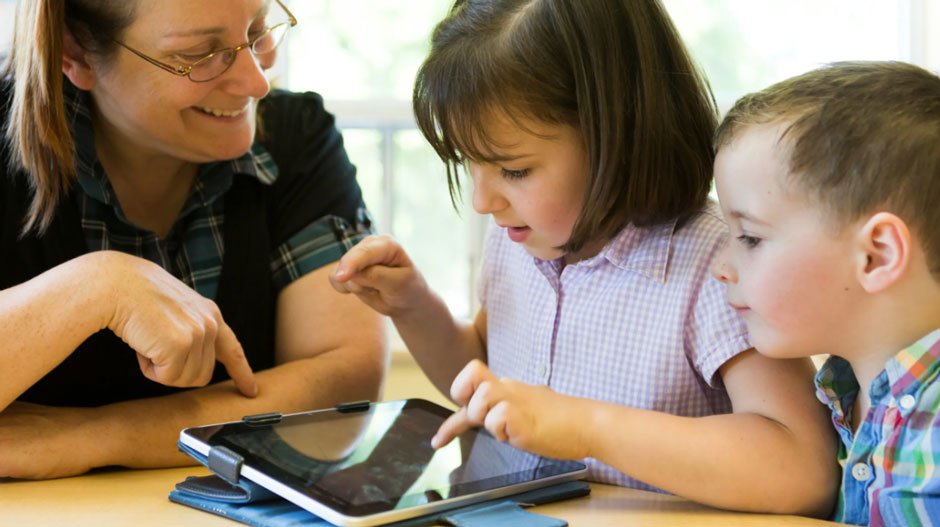It’s no secret that technology is everywhere these days. Our phones, video games, the internet – these are a big part of daily life. And that includes our children, too.
First, limits and rules should be set. Steps like having internet filters, app usage limits, and device time-outs. Explain why this protects and respects them. Ask them what they think reasonable rules would be. Working together builds trust.
You need to take an interest in the role tech plays in their life. Participate in mobile games and TikTok dances now and then. Laugh together over memes. Have open talks about what’s appropriate to post publicly online. Keep it relaxed, not lecturing.
Going High-Tech for Our Kids
These days, it feels like all kids want to do is gaze at screens. Smartphones, tablets, TVs – technology is everywhere!
As parents, knowing the best way to handle all these gadgets and apps is tough.
Plenty of mistakes have likely been made trying to get this balance right.
It’s tempting to want to be the “fun mom” who jokes around with the kids. But kids need rules and limits, especially with tech and media. Parents have to decide what content and apps are okay and how long usage is allowed. Explain kindly but firmly that it is time to power down and enjoy other activities.
At first, it’s easy to hardly pay attention to what kids are watching or doing on devices. But content really does affect children’s thoughts and behaviour. Monitoring the apps used and videos watched is critical. Share important values.
Educational Gadgets for Kids
Nowadays, children grow up well with tech around. We may think too much screen time is bad. But when used right, smart devices can help toddlers learn. Interactive toys make lessons come alive. And educational apps allow them to move at their own pace.
Tablets are popular for tiny tykes. Sturdy kid versions have bright colors and thick bumpers. Kid-safe web browsers filter out mature stuff. Apps let them draw, solve puzzles, or explore outer space. But parent controls and time limits are still vital.
Then there are learning pens. These are written on special paper and can be scanned, narrated, translated, and more. Great for language practice!
The Cost Concern
The problem is that all these neat educational toys add up quickly. Many don’t realise you can borrow from 401k’s penalty-free for school costs. Educational electronics count, too. Just set up affordable paybacks to avoid fines down the road.
Are you too nervous to tap retirement accounts? Ask grandparents, uncles/aunts if they’d be willing to give or loan the funds. Offer milestones or behaviour incentives. Many love to invest in little one’s futures.
Educational gadgets can get pricey quickly. One solution is taking out a personal loan, but many with less-than-great credit fear rejection. The good news is there are specialised bad credit lenders to help.
Low credit score loans through direct lenders typically have higher interest, fees, and lower borrowing limits but can be much easier to qualify for. So, those with poor credit still have options out there for personal loans if they shop around.
Apps That Make Learning Addictive
Let’s start with apps for core subjects – maths and science. Bitsbox teaches coding with fun games that feel like puzzles. It starts quickly with dragging code blocks and builds up to writing actual scripts.
Another favourite is Math Bakery. Kids get to run their own bake shop in this app! They sell tasty pies and cookies to cute animals while practising sums, division, and fractions.
Book Creator is a cool app for children to author their own ebooks to sharpen their literacy skills. They can add photos, record audio narration, and publish to the class library.
Epic! is a digital library with thousands of fiction and nonfiction books, learning videos, and quizzes for all ages. A wonderful portal for independent reading or researching school projects.
Design and Create
Now, onto the more creative apps for writing music, filmmaking, and art. Kids can rock out in the Walk Band by laying down multiple instrument tracks and vocals. Supportive user community shares song mixes online.
Animation Desk lets children draw and animate cartoons, adding voices and music. It is very intuitive, even for younger kids. And you don’t have to break the bank – many have free versions, too. Educational or creative tools are out there to unlock any curiosity.
Monitoring Usage with Smartwatches
It’s a balancing act to manage screen time versus play time. Smartwatches for kids can help. They combine parental controls with fun features to gently monitor usage.
Leading brands have app blocking, location tracking via GPS, and contacts for preset safety numbers. Some even have step challenges to motivate activity away from the device!
It’s still important that we don’t become “helicopter parents.” Have open talks about appropriate usage instead of secret monitoring. Build trust as kids prove themselves responsible.
Promoting Outdoor Play Time
Another high-tech strategy is to encourage outdoor exploration – with technology’s help!
Interactive discovery apps also enhance the experience once back home. Seek shows wildlife near your location for them to identify. Star Walk Kids points out constellations visible overhead any night.
For ages 6-12, TerraKids Explorer encourages virtual nature scavenger hunts to earn cool prizes. It makes learning ecology exciting by “gamifying” it.
Getting Active with Wearables
Fitness trackers tuned for little wrists have exploded in popularity, too. Leading options integrate activities into virtual adventures on mobile. Step challenges, sleep tracking, and rewards systems make getting active more alluring.
Some brands partner the child watch with a parent’s device to amplify that motivation. The whole family can have friendly daily movement competitions! Additional perks like digital chore lists also build responsibility.
Staying current on lending options can save money and headaches. Helpful sites like MyFinancialLoans blog about the latest in personal loans, credit cards, budgeting tips, and even niche stuff like wedding financing.
Conclusion
Also important is modelling healthy tech habits. Don’t text others constantly when spending family time. Have tech-free meals where you can really connect. Consider a household rule of no phones in the bedroom overnight, parents included.
Our kids do live in a digital era. But by being supportive, setting guidelines, and leading by our own example, parents can manage technology’s role rather than letting it rule. The human connections will still be what matters most to our children in the end.








